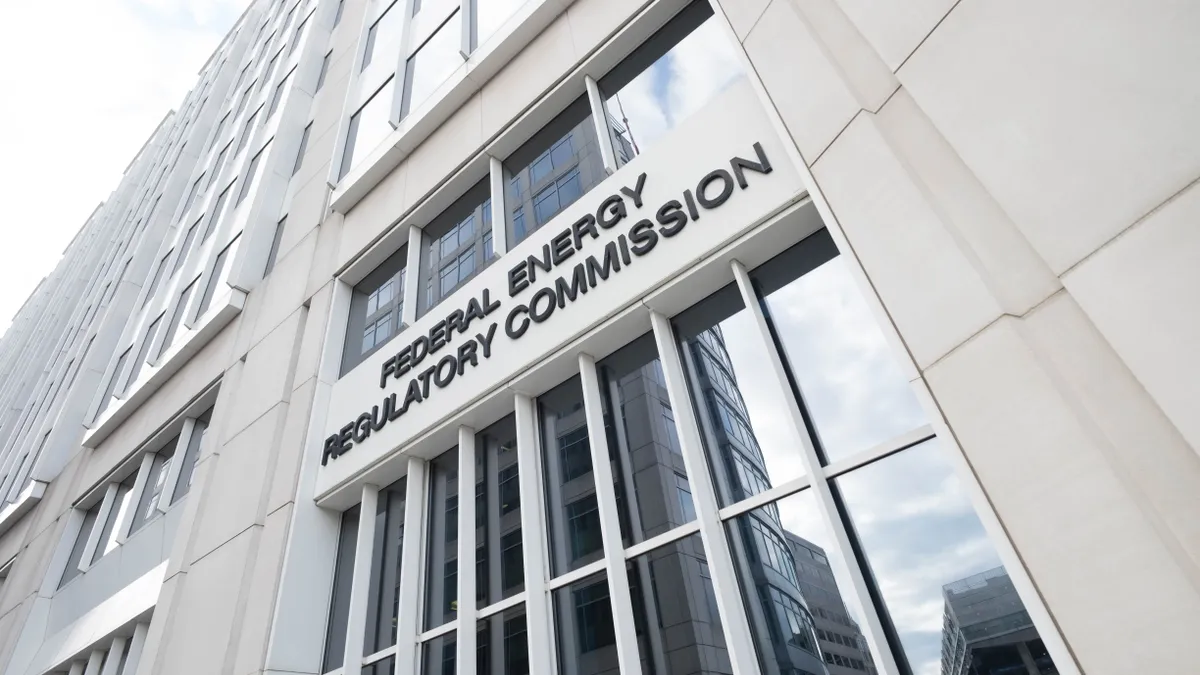Dive Brief:
- State jurisdictional issues came to the fore in the first day of the Federal Energy Regulatory Commission's technical conference on aggregated distributed energy resources (DERs) on Tuesday.
- States in the Midcontinent ISO (MISO) argued FERC should allow them to choose whether to let aggregated DERs participate in both retail and wholesale markets. States from other electricity markets, however, argued the value proposition of these resources may rely on that sort of dual participation.
- Conference panelists also addressed whether to allow DER aggregations across multiple "nodes," or grid pricing points, as well as how to prevent resources from being "double-compensated" if they participate in more than one market.
Dive Insight:
FERC called the aggregated DER technical conference in February when it approved a separate order regarding how energy storage facilities.
That order allowed large-scale storage in each regional electricity market to provide multiple services, but regulators could not settle on similar rules for aggregations of DERs like rooftop solar and vehicle chargers, pushing them to call the conference.
During a morning session on Tuesday, Commissioner Cheryl LaFleur asked regional grid operators if FERC could take a similarly broad approach to aggregated DERs and approve rule that applies to all markets, or if there are technical differences between regions that necessitate separate approaches.
The main difference, representatives from the New York ISO and ISO-New England responded, lies in the capabilities of distribution utilities, regulated by the states rather than FERC.
While a few utilities in states like New York and California are developing the ability to control DERs on their grids, most are still relying on "crude" operating systems without those capabilities, Henry Yoshimura, head of ISO-NE demand strategy, told the conference.
Those concerns carried over into the afternoon session featuring state regulators. Ted Thomas, chairman of the Arkansas Public Service Commission and president of the Organization of MISO States, noted that integrating aggregated DERs will require new grid communication systems for utilities to both control the resources and communicate with their owners.
"Those systems don't yet exist in the MISO footprint," he said. "For both safety and curtailment, somebody has to have the authority when there is a system problem to turn things off. The systems to do that don't yet exist."
Because of that, Thomas cautioned that FERC should not mandate all distributed resources be allowed to participate in wholesale and retail power markets.
"Draw a line" between the markets, he urged regulators, and "let states decide" if they want dual participation.
Thomas's opinion is likely to carry weight with regulators, as MISO has more state members than any other regional electricity market and most of its states are still responsible for resource adequacy. But state representatives from other markets said letting each one decide participation rules could stunt DER growth.
"The only way for this market to grow as I see it is to have the opportunity to mix and match," said Andrew Place, vice chairman of the Pennsylvania Public Service Commission, which lies in the PJM market. "I think if you sell people as one or the other I think we're fixing the system we had, we're not looking to the future of what value this can bring to the grid."
FERC Chairman Kevin McIntyre picked up on the argument, asking Thomas if allowing some states to opt out of dual participation could present an "undue burden" to the growth of distributed resources.
"To me it's a starting point and not an ending point," Thomas said. While some states will choose not to take on the complex questions of DER aggregation immediately, there is a "critical mass" of states who will, and the laggards can adopt their models.
"You're giving states an out on working on those complexities," Thomas said of his proposal.
In addition to questions of dual participation, state regulators addressed who should decide when DER aggregations should provide services to each market.
For resources deployed by customers behind their meter, panelists agreed that customers and their DER providers should decide when and how to participate in wholesale markets. But the issue gets trickier when a utility decides to deploy a DER aggregation instead of building traditional grid infrastructure, Asim Haque, chairman of the Ohio Public Utilities Commission (PUCO), pointed out.
In those cases, Haque said, a utility may ask for rate recovery from its customers to finance the investment in a DER aggregation. If that happens, he said, the distribution utility should use any market revenues from those resources to pay back their customers. PUCO is currently considering such a ruling as part of its PowerForward initiative on grid modernization.
"If that is something that's going to be built on the back of customers, then the benefit needs to be returned back to customers," Haque told Utility Dive after the conference. "You shouldn't be able to keep that revenue."













